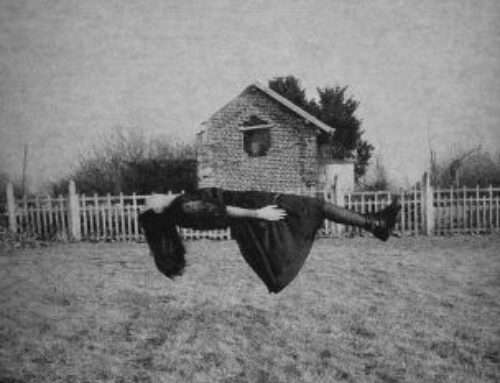In this part I will walk you through the creation of a report in SQL Server Managmenet Studio. The report will show all clients with SMS 2003 Toolkit installed.
In the 3 part we will take a closer look at some of the conditionals and aggregate functions.
![clip_image002[4]](https://blog.ctglobalservices.com/wp-content/uploads/old/2008/09/clip-image0024-thumb.jpg)
![clip_image002[6]](https://blog.ctglobalservices.com/wp-content/uploads/old/2008/09/clip-image0026-thumb.jpg)
![clip_image002[8]](https://blog.ctglobalservices.com/wp-content/uploads/old/2008/09/clip-image0028-thumb.jpg)
![clip_image002[10]](https://blog.ctglobalservices.com/wp-content/uploads/old/2008/09/clip-image00210-thumb.jpg)
![clip_image002[12]](https://blog.ctglobalservices.com/wp-content/uploads/old/2008/09/clip-image00212-thumb.jpg)
![clip_image002[14]](https://blog.ctglobalservices.com/wp-content/uploads/old/2008/09/clip-image00214-thumb.jpg)
![clip_image002[18]](https://blog.ctglobalservices.com/wp-content/uploads/old/2008/09/clip-image00218-thumb.jpg)
![clip_image002[20]](https://blog.ctglobalservices.com/wp-content/uploads/old/2008/09/clip-image00220-thumb.jpg)
![clip_image002[22]](https://blog.ctglobalservices.com/wp-content/uploads/old/2008/09/clip-image00222-thumb.jpg)
![clip_image002[24]](https://blog.ctglobalservices.com/wp-content/uploads/old/2008/09/clip-image00224-thumb.jpg)
![clip_image002[26]](https://blog.ctglobalservices.com/wp-content/uploads/old/2008/09/clip-image00226-thumb.jpg)
![clip_image002[28]](https://blog.ctglobalservices.com/wp-content/uploads/old/2008/09/clip-image00228-thumb.jpg)
![clip_image002[30]](https://blog.ctglobalservices.com/wp-content/uploads/old/2008/09/clip-image00230-thumb.jpg)
![clip_image002[32]](https://blog.ctglobalservices.com/wp-content/uploads/old/2008/09/clip-image00232-thumb.jpg)
![clip_image002[34]](https://blog.ctglobalservices.com/wp-content/uploads/old/2008/09/clip-image00234-thumb.jpg)
![clip_image002[36]](https://blog.ctglobalservices.com/wp-content/uploads/old/2008/09/clip-image00236-thumb.jpg)
![clip_image002[38]](https://blog.ctglobalservices.com/wp-content/uploads/old/2008/09/clip-image00238-thumb.jpg)
![clip_image002[40]](https://blog.ctglobalservices.com/wp-content/uploads/old/2008/09/clip-image00240-thumb.jpg)
![clip_image002[42]](https://blog.ctglobalservices.com/wp-content/uploads/old/2008/09/clip-image00242-thumb.jpg)
![clip_image002[44]](https://blog.ctglobalservices.com/wp-content/uploads/old/2008/09/clip-image00244-thumb.jpg)



Hi Kent,
this article is really useful for newbie like me, just a question on it.Can i add new column inside the existing table?
The purpose i want to do this is to generate extra information like asset tag, department, etc. This will making life more easier for user to gain information. Please advise.
Thanks in advanced.
Chungb
I do not think you can, as these are pre-built tables. I think you can connect create your table and tie it to the database using a third party like MSACCESS or so.
Hi Amnon,
It’s not a problem creating reports this way. We are not messing up the database only working with the views. Having said that, you can also use other methods like Microsoft Access.
WIth the example of creating the report is there a way to make a report with these software titles and include the Netbios name for the systems that have these programs. Microsoft only. Microsoft Office Enterprise 2007, Microsoft Office Professional Edition 2003,Microsoft Office Professional Plus 2007,Microsoft Office Project Professional 2003,Microsoft Office Project Professional 2007,Microsoft Office Visio Professinal 2003,Microsoft Office Visio Professional 2007,Microsot Ofice Visio Standard 2003,Microsot Ofice Visio Standard 2007.
I tried the example above and was able to get a report for one title but how do I make a report for multiple titles.
trying to create the report or a query to make a report with these software titles and include the Netbios name/workstations, etc. for the systems that have these programs. Microsoft only. Microsoft Office Enterprise 2007, Microsoft Office Professional Edition 2003,Microsoft Office Professional Plus 2007,Microsoft Office Project Professional 2003,Microsoft Office Project Professional 2007,Microsoft Office Visio Professinal 2003,Microsoft Office Visio Professional 2007,Microsot Ofice Visio Standard 2003,Microsot Ofice Visio Standard 2007. Please help. Thanks!!!!
I like the valuable info you provide in your articles.
I’ll bookmark your weblog and check again here frequently.
I’m quite sure I will learn many new stuff right here!
Best of luck for the next!
Now we visit the most important part of planning a caravan holiday ‘
the budget. Next occasion the thing is a signal saying ‘high end caravans available’ stop and have a
peek. A category of five at the static caravans sale will be looking for a static
that’s capable of sleeping five people.